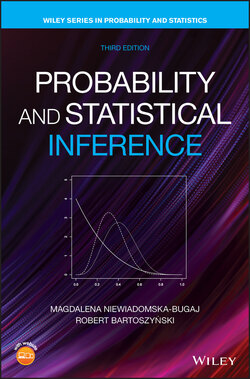Читать книгу Probability and Statistical Inference - Robert Bartoszynski - Страница 46
2.2 Probability as a Frequency
ОглавлениеAccording to the common interpretation, probability is the “long‐run” relative frequency of an event. The idea connecting probability and frequency is (and had been for a long time) very well grounded in everyday intuition. For instance, loaded dice were on several occasions found in the graves of ancient Romans. That indicates that they were aware of the possibility of modifying long‐run frequencies of outcomes, and perhaps making some profit in such a way.
Today, the intuition regarding relationship between probabilities and frequencies is even more firmly established. For instance, the phrases “there is 3% chance that an orange picked at random from this shipment will be rotten” and “the fraction of rotten oranges in this shipment is a 3%” appear almost synonymous. But on closer reflection, one realizes that the first phrase refers to the probability of an event “randomly selected orange will be rotten,” while the second phrase refers to the population of oranges.
The precise nature of the relation between probability and frequency is hard to formulate. But the usual explanation is as follows: Consider an experiment that can be repeated under identical conditions, potentially an infinite number of times. In each of these repetitions, some event, say , may occur or not. Let be the number of occurrences of in the first repetitions. The frequency principle states that the ratio approximates the probability of event , with the accuracy of the approximation increasing as increases.
Let us observe that this principle serves as a basis for estimating probabilities of various events in the real world, especially those probabilities that might not be attainable by any other means (e.g., the probability of heads in tossing a biased coin).
We start this chapter by putting a formal framework (axiom system) on a probability regarded as a function on the class of all events. That is, we impose some general conditions on a set of individual probabilities. This axiom system, due to Kolmogorov (1933), will be followed by the derivation of some of its immediate consequences. The latter will allow us to compute probabilities of some composite events given the probabilities of some other (“simpler”) events.
